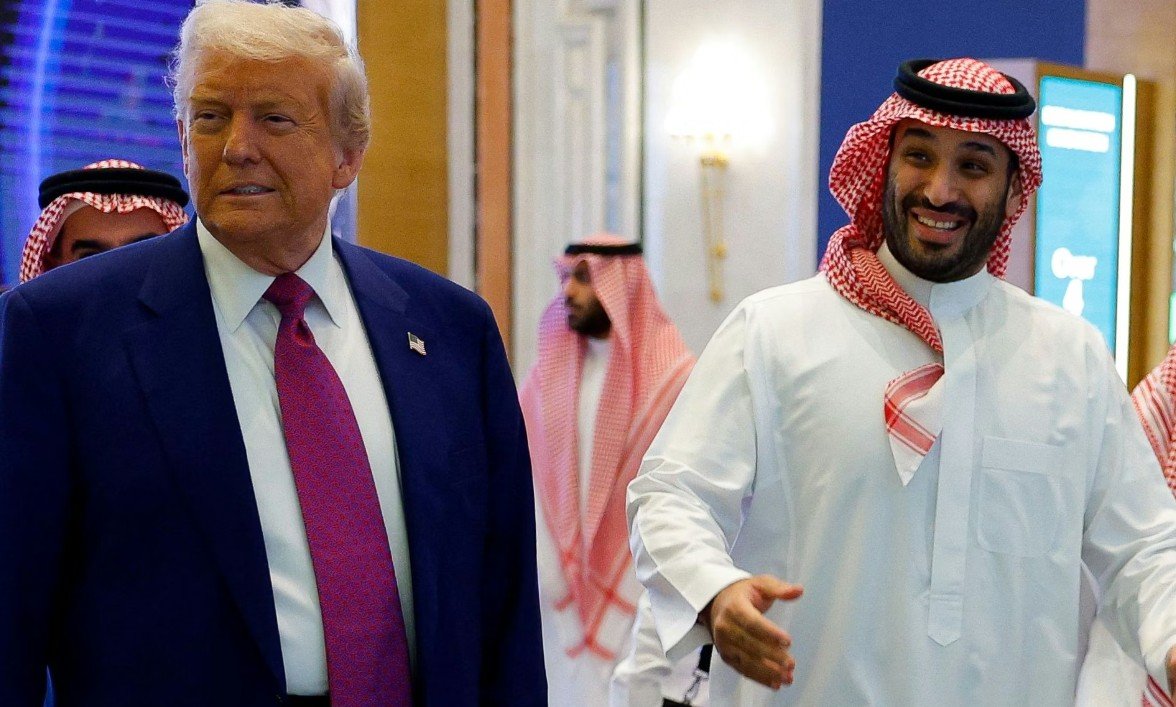President Donald Trump welcomed Saudi Crown Prince Mohammed bin Salman to the White House on November 18, 2025, in a high profile meeting that marks the prince’s first visit since the 2018 killing of journalist Jamal Khashoggi. This gathering focuses on major deals in defense, technology, and energy, while aiming to boost ties between the United States and Saudi Arabia amid ongoing Middle East tensions.
Background on the Historic Visit
The meeting comes at a key moment for both leaders. Trump, fresh into his second term, seeks to strengthen global partnerships after a busy start with domestic challenges like economic reforms and legal battles. For the crown prince, often called MBS, this trip rebuilds his image in Washington following years of fallout from the Khashoggi case, where U.S. intelligence pointed to his involvement.
Saudi Arabia has shifted its role in recent times, pushing for peace talks in Gaza and urging Iran toward nuclear deals with the U.S. This visit builds on Trump’s May 2025 trip to Riyadh, where the two nations inked initial agreements worth hundreds of billions. Experts note that such ties help stabilize oil prices and counter regional threats.
The White House rolled out full honors, including a morning welcome ceremony and an evening black tie dinner. This level of pomp signals a reset in relations, despite past criticisms from U.S. lawmakers and human rights groups.

Major Deals on the Agenda
Talks center on multibillion dollar pacts that could reshape economic and security links. Officials expect agreements in artificial intelligence, civil nuclear energy, and advanced weapons sales. These build on Saudi pledges from earlier this year, including a massive investment in U.S. tech sectors.
One highlight is potential sales of F 35 fighter jets to Saudi Arabia, a move that could enhance the kingdom’s defense against rivals like Iran. In return, Saudi leaders aim for U.S. security guarantees, similar to those in NATO alliances.
Here are some key areas of discussion:
- AI infrastructure: Saudi Arabia plans to invest billions in U.S. based projects to boost tech innovation and job creation.
- Nuclear cooperation: Talks include frameworks for peaceful nuclear energy, with strict controls to prevent weapon development.
- Trade boosts: Dozens of deals aim to fulfill a $600 billion investment promise, covering energy and manufacturing.
These pacts could add thousands of jobs in American states, while giving Saudi Arabia tools to diversify its oil dependent economy.
Path to Israel Saudi Normalization
A big goal is advancing peace in the Middle East through Saudi recognition of Israel. Trump has long pushed the Abraham Accords, which normalized ties between Israel and several Arab nations during his first term. MBS has shown interest, but demands progress on Palestinian issues and U.S. defense support.
Recent events, like the Gaza ceasefire efforts, make this timely. If successful, it could isolate Iran and stabilize the region. However, challenges remain, including opposition from hardliners in both countries.
Analysts predict this meeting could lay groundwork for a broader accord, tying in U.S. arms sales as incentives.
| Aspect | U.S. Benefits | Saudi Benefits | Potential Risks |
|---|---|---|---|
| Defense Sales | Increased exports and jobs | Advanced military tech | Escalation with Iran |
| Nuclear Energy | Tech sharing and revenue | Energy diversification | Proliferation concerns |
| AI Investments | Innovation funding | Access to cutting edge tools | Data security issues |
| Peace Talks | Regional stability | Global standing boost | Political backlash at home |
This table shows the balanced stakes, based on expert views from recent discussions.
Reactions and Criticisms at Home
Not everyone supports the warm welcome. Some MAGA supporters and lawmakers argue Trump should focus more on U.S. borders and economy instead of foreign deals. Human rights advocates recall the Khashoggi killing and call for accountability.
On social media, opinions split. Supporters praise the economic wins, while critics worry about overlooking past actions. Trump dismisses the pushback, calling the partnership vital for American interests.
Public sentiment, from recent polls, shows mixed views. About 55 percent of Americans favor stronger Saudi ties for energy security, but 40 percent want human rights conditions attached.
Despite the noise, the administration highlights how these deals counter China’s growing influence in the region.
Global Implications for Energy and Security
The meeting ties into broader shifts in global energy markets. With oil prices fluctuating due to conflicts, Saudi commitments could help keep supplies steady. Trump has emphasized energy independence, and Saudi investments align with that.
Security wise, deeper U.S. Saudi cooperation might deter threats from groups like the Houthis in Yemen. Logical reasoning suggests this could lead to joint operations or intelligence sharing, building on past successes.
Recent events, such as Iran’s nuclear talks, add urgency. If Trump secures a deal, it might prevent a wider arms race.
Looking Ahead to Future Ties
This visit sets a tone for Trump’s foreign policy in 2025 and beyond. Success here could lead to more summits and expanded accords. For now, both sides appear optimistic about long term gains.
Readers, what do you think about these developments? Share your thoughts in the comments and spread the word on social media to join the conversation.
